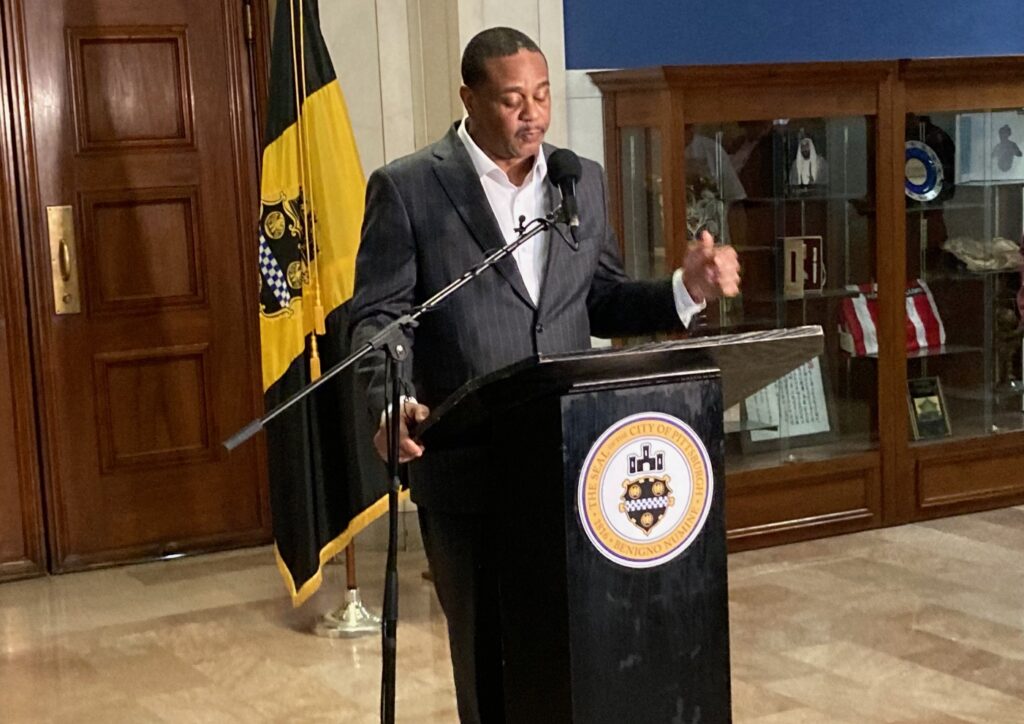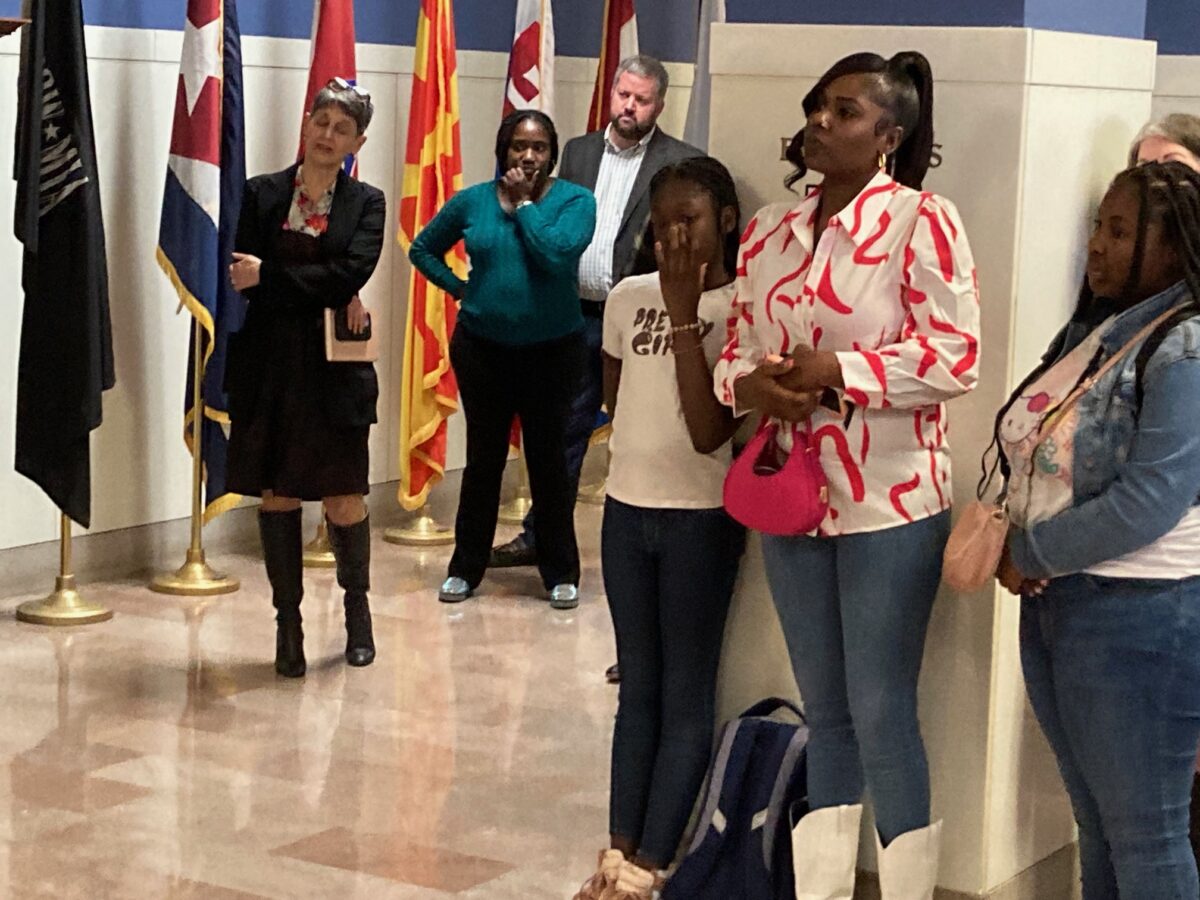Pittsburgh Mayor Ed Gainey realizes it’s probably an unrealistic, unreachable goal, but the city announced Monday it has joined the international Vision Zero Network that strives to eliminate all fatal and serious traffic crashes.
At a news conference outside City Council Chambers, city officials outlined steps they will take toward Vision Zero. The program started in Sweden in the 1990s with the approach that every crash is preventable and became popular in Europe before becoming more widely adopted in the U.S. in recent years.
Gainey and others said the city has gathered data identifying the city’s most dangerous streets and intersections and will concentrate safety improvements in those areas. The city’s budget is nearly doubled to about $1 million for safety improvements, and the funds will be “going to the places where they are going to do the most good,” said Kim Lucas, director of the city Department of Mobility and Infrastructure.
“We can save lives, but we can only do that when we come together,” Gainey said, vowing to make Pittsburgh the safest city in America. “Some of these crashes, they don’t have to happen.”
Lucas said her group will work with city departments such as public works and planning as well as the Pennsylvania Department of Transportation and the Southwestern Pennsylvania Commission, which prioritizes federal funding for transportation projects. Five of the 10 streets with the most serious crashes are owned by the state, she said, and 83% of serious crashes occur on 10% of the streets.
“The responsibility is a shared responsibility,” Lucas said. “Our mission is to provide the physical infrastructure to make sure you can get where you want to go safely.”
Councilwoman Barb Warwick said the Vision Zero effort will put more emphasis on traffic safety, noting that homicides have increased by 20 in the past three years but traffic fatalities in the city have jumped by 71. Drivers have to share some of that responsibility, she said.
“Who is responsible for that? We are,” she said. “We drive too-big vehicles and drive them too fast. … Today we say enough is enough.”
Warwick said the city should “bang this public safety drum every day” to encourage more responsible behavior by drivers. That includes being more courteous to pedestrians and bike riders.
“They have just as much right to use our streets as you do,” she said.
Traffic Engineer Michael Maloch said the city knows the problem areas, such as streets that allow right turns on red lights (60% more accidents than those that don’t) and major streets such as Grant Street and Frankstown, Penn and Liberty avenues. It also knows what steps help, such as speed humps that reduce speed 55%, bike lanes (30% fewer accidents) and bump-outs that create a shorter distance to cross the street.
Maloch said he’s enthusiastic about the Vision Zeros effort but melancholy that it is necessary, noting 23 people died in city crashes last year.
“We have something to learn for each of those,” he said.
Chakara Walker, who lives on the Mexican War Streets, said she’s frustrated because the city hasn’t taken any action to improve conditions at Jacksonia Street and Brighton Road, where her 11-year-old daughter, Zuri, was injured when she was struck by a vehicle Dec. 13. Maloch said the city expects work to begin next month to change the 50-year-old traffic signal there for a new one with crossing signals for pedestrians.
Gainey, who took office in January 2022, asked for patience.
“We knew that when we were coming in, we were behind,” he said. “Bear with us a little.”

Ed covers transportation at the Pittsburgh Post-Gazette, but he's currently on strike. Email him at eblazina@unionprogress.com.



